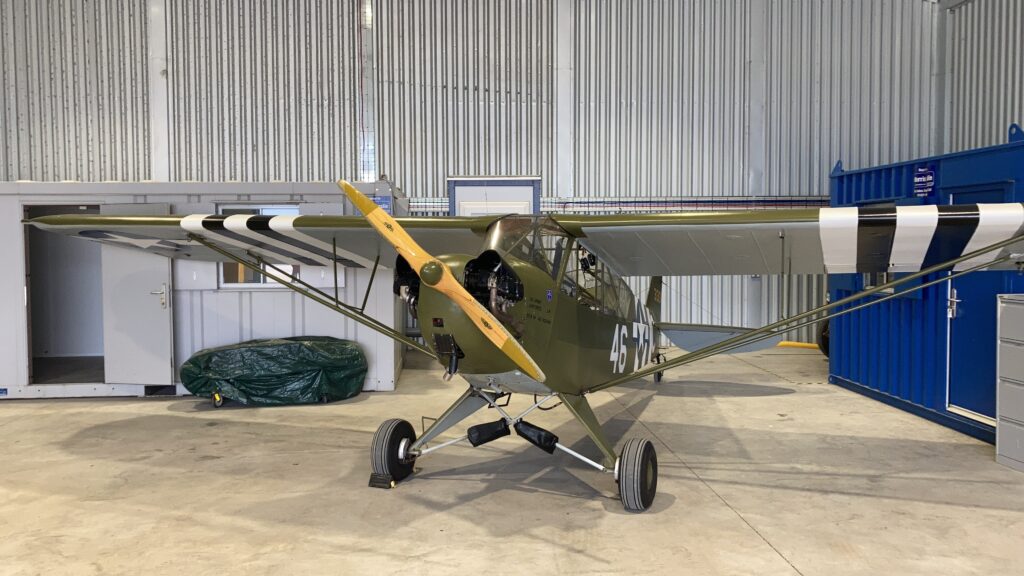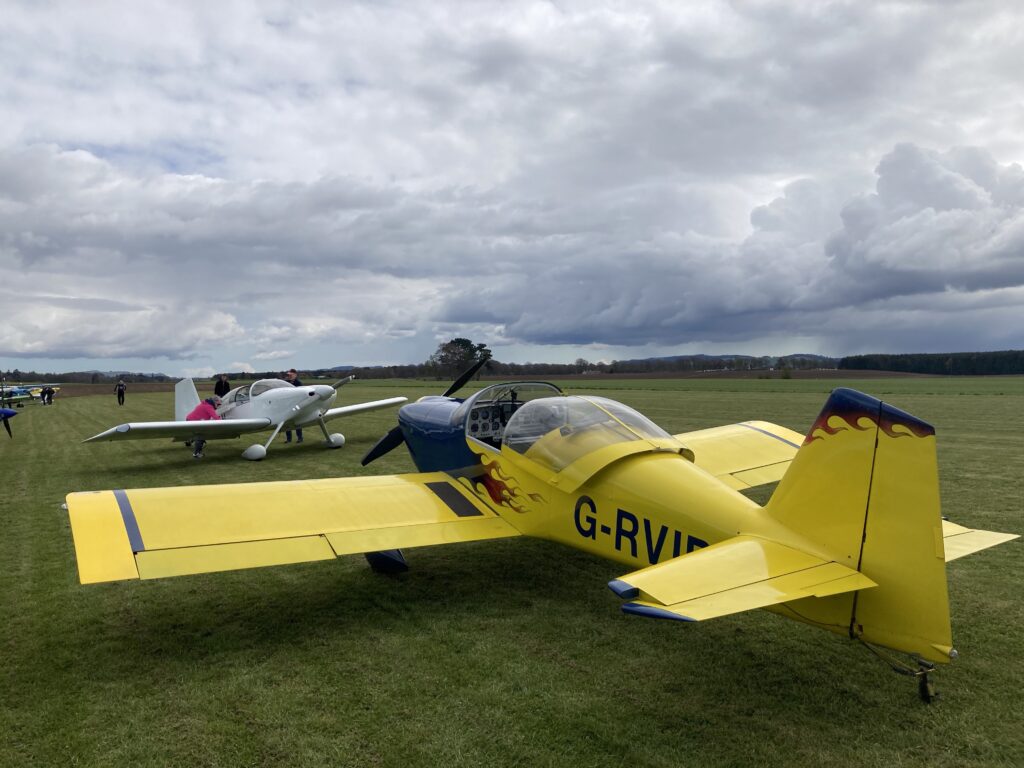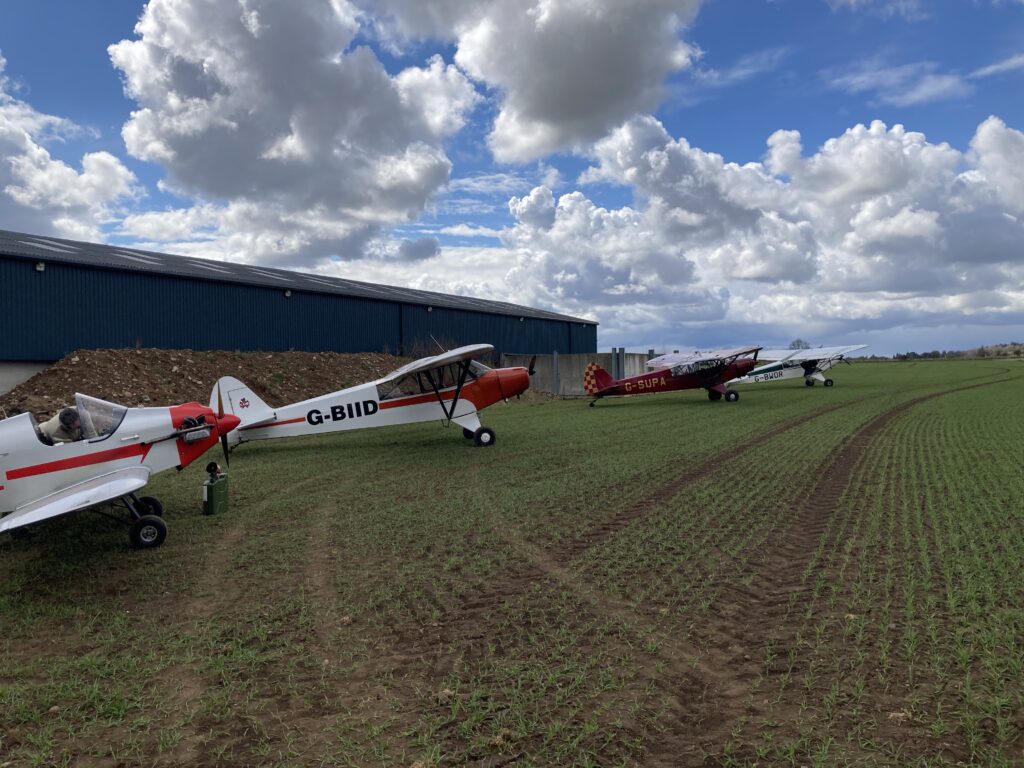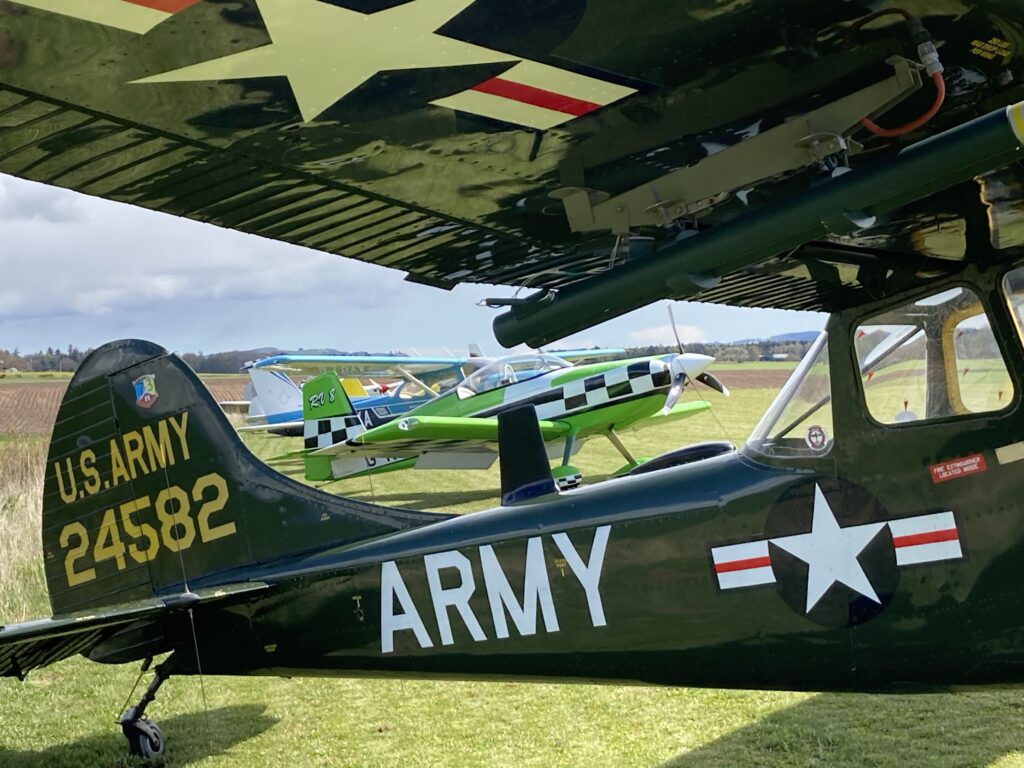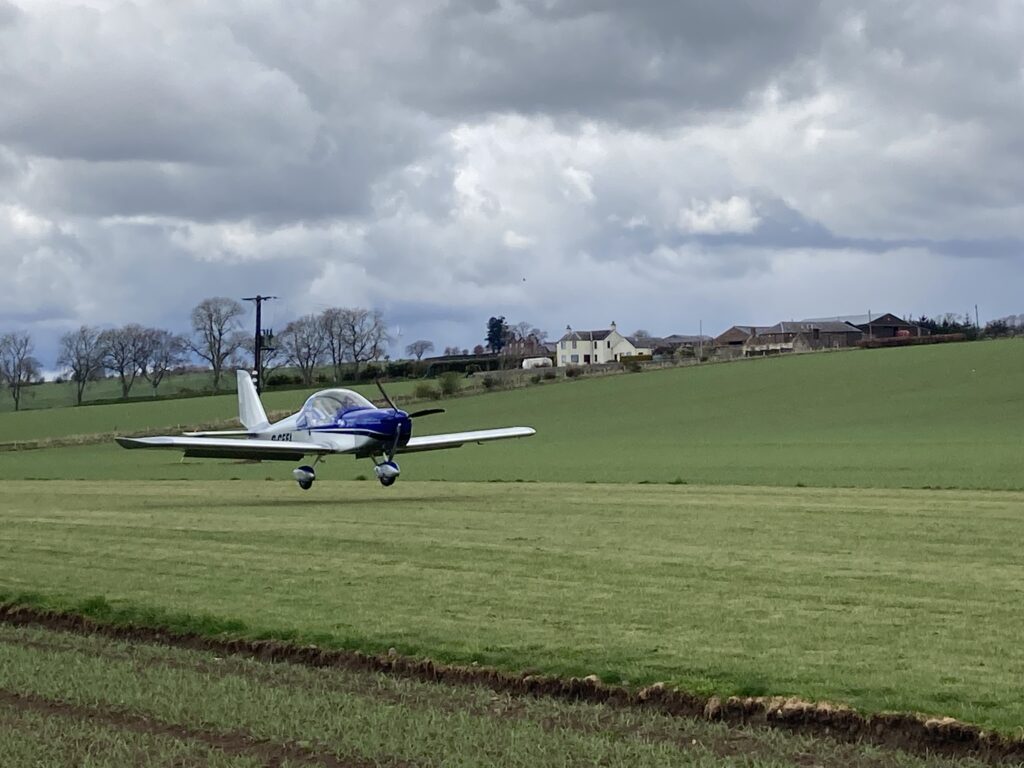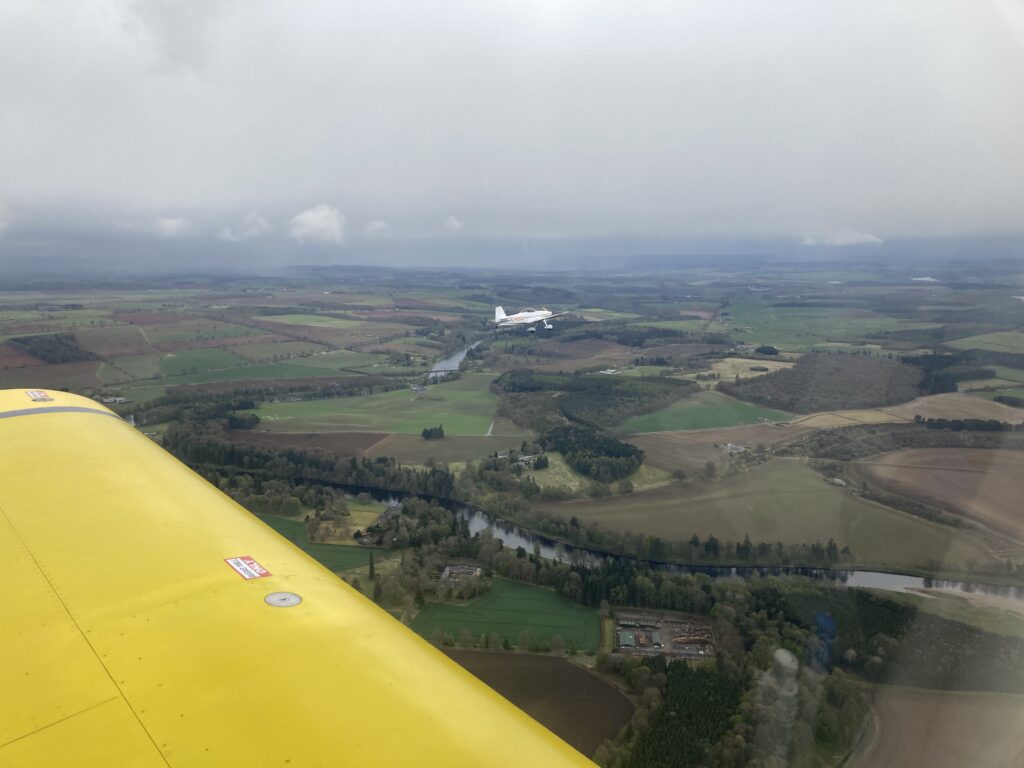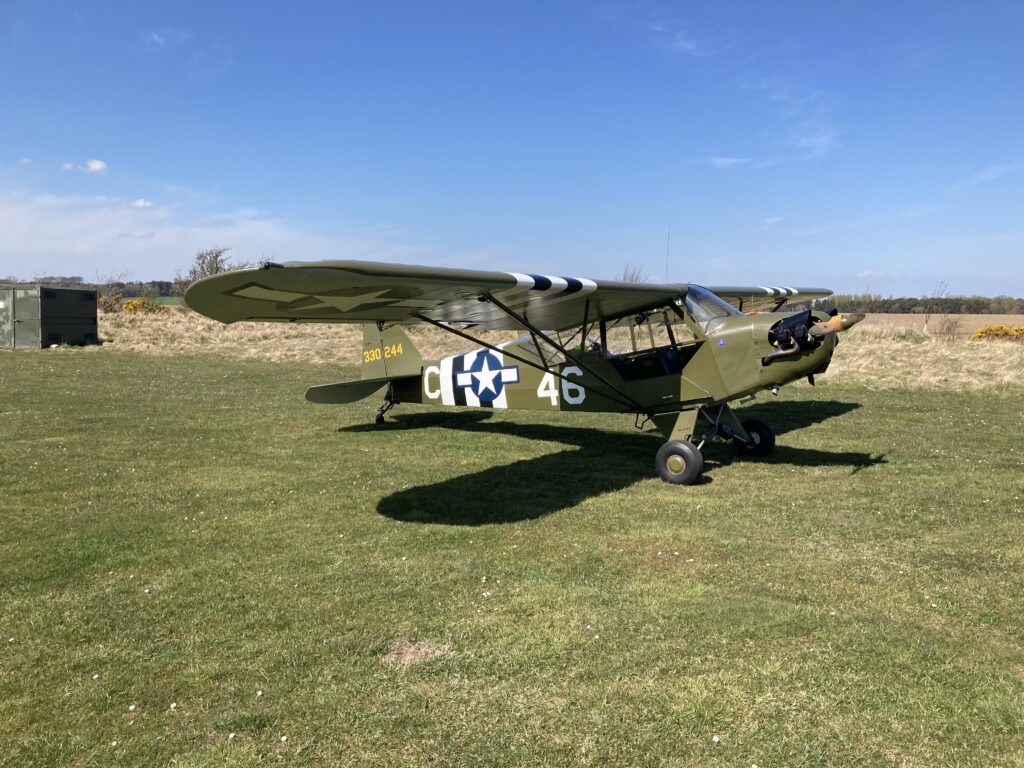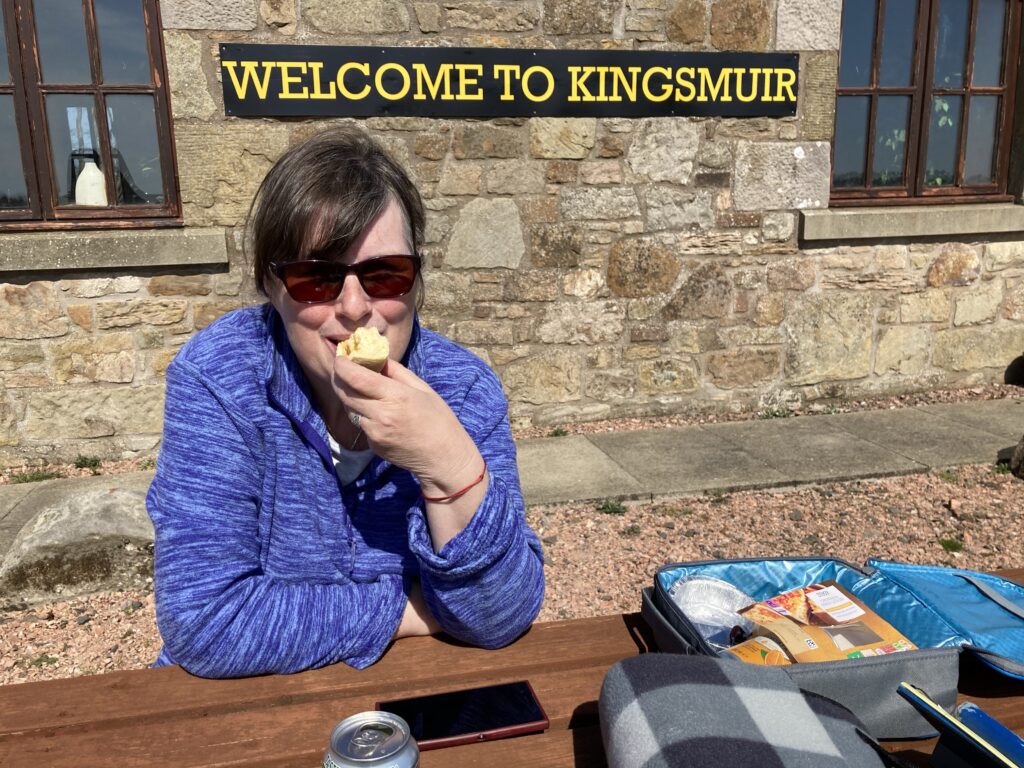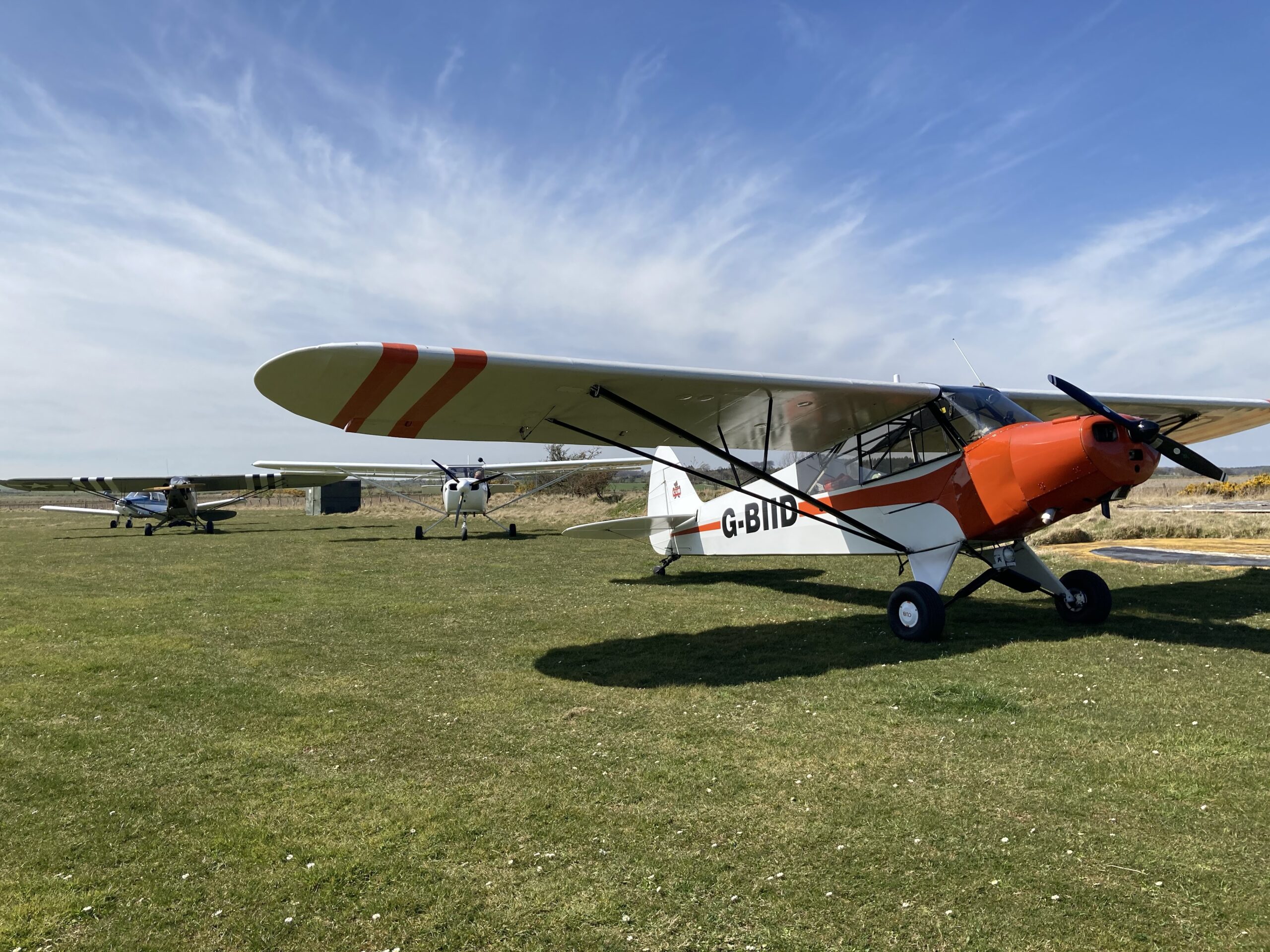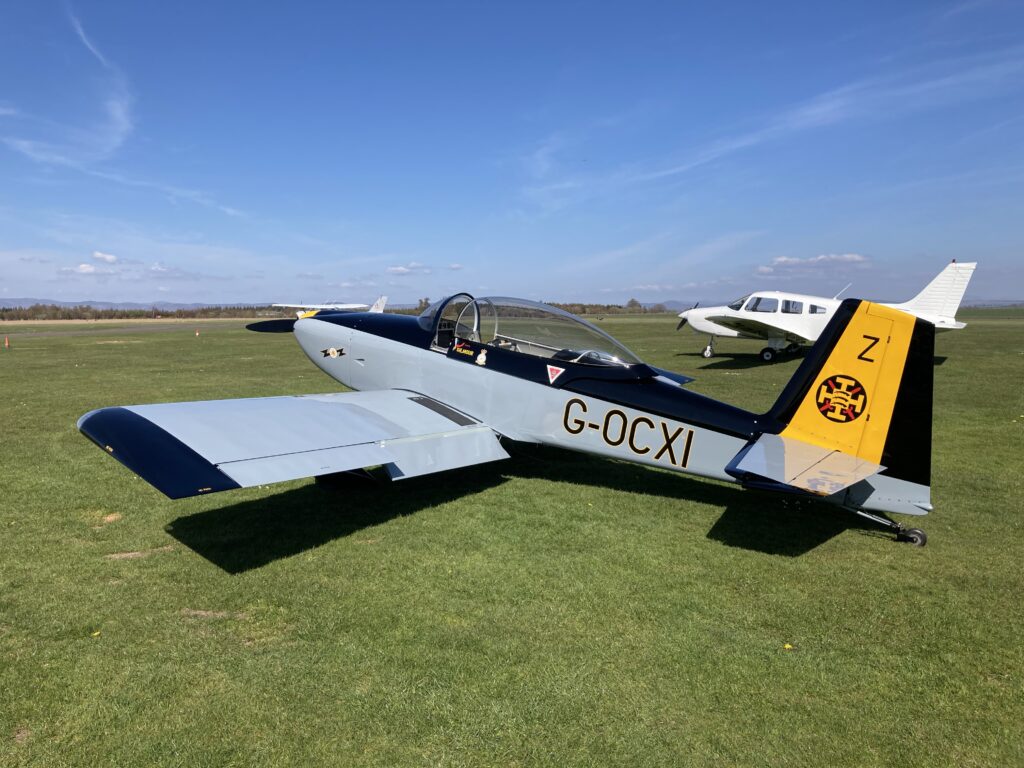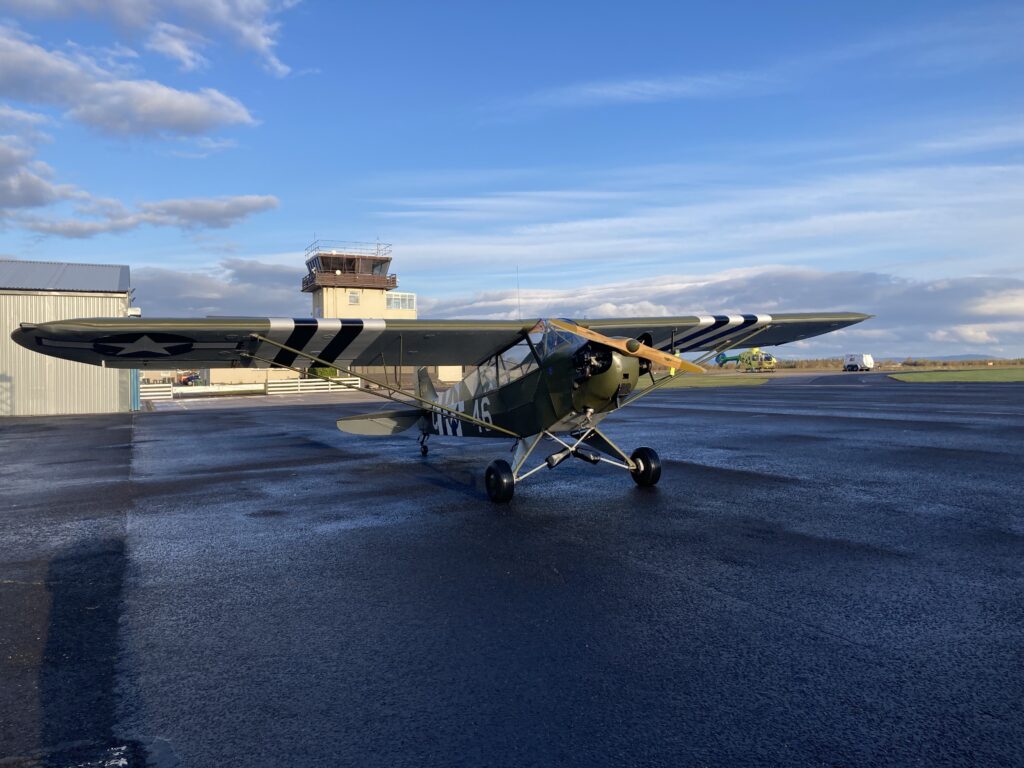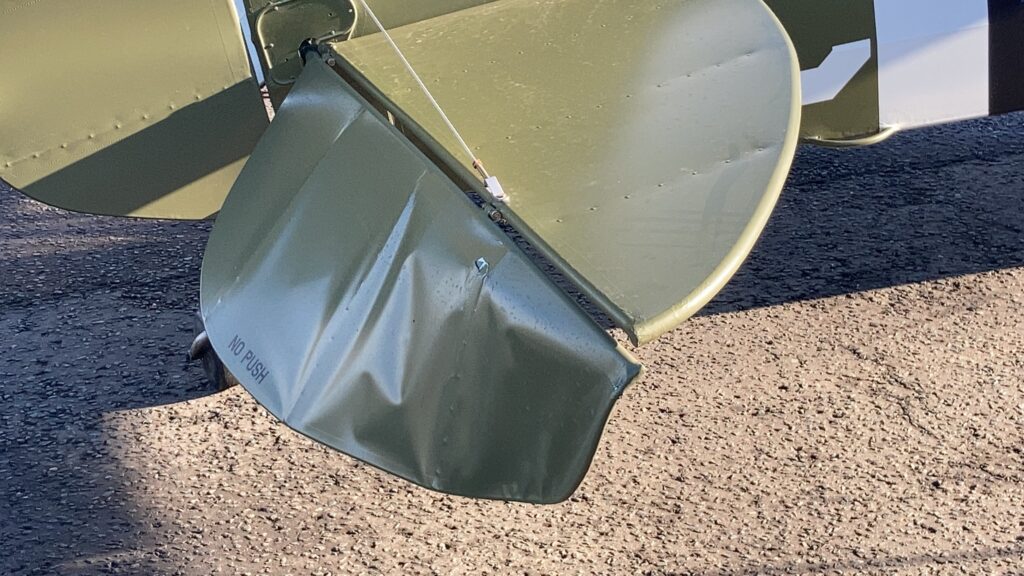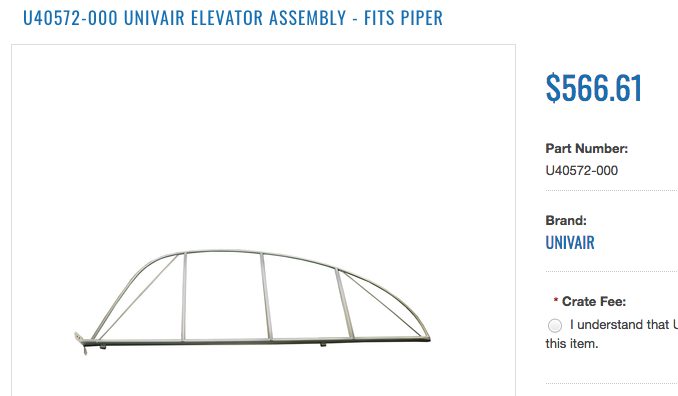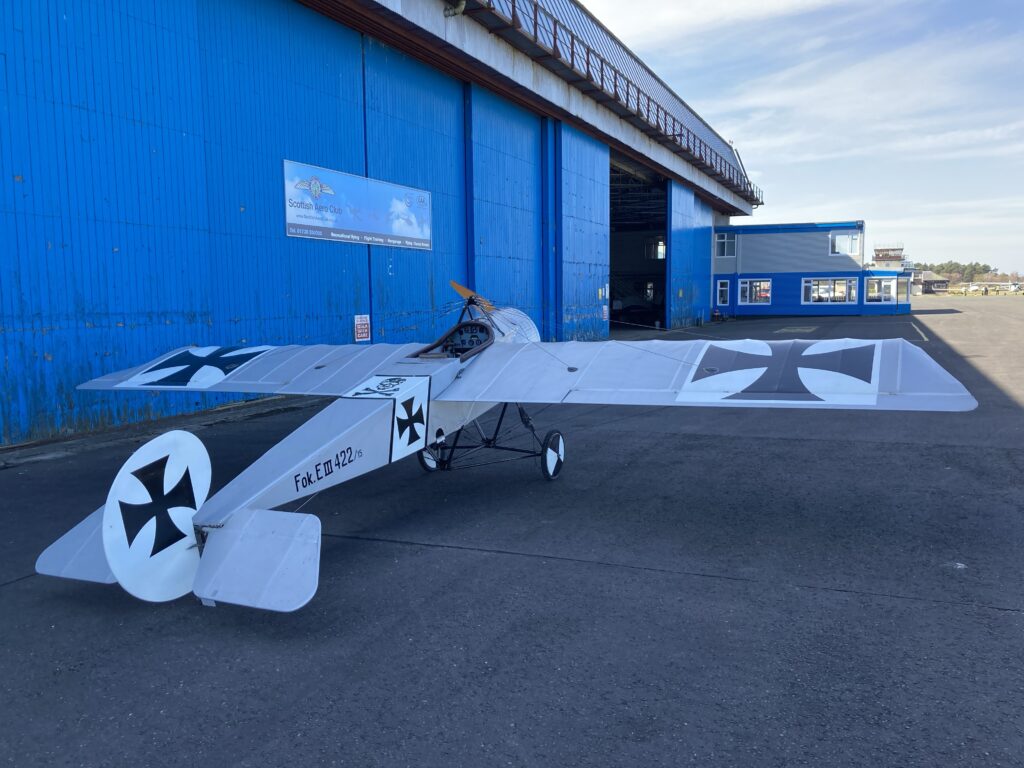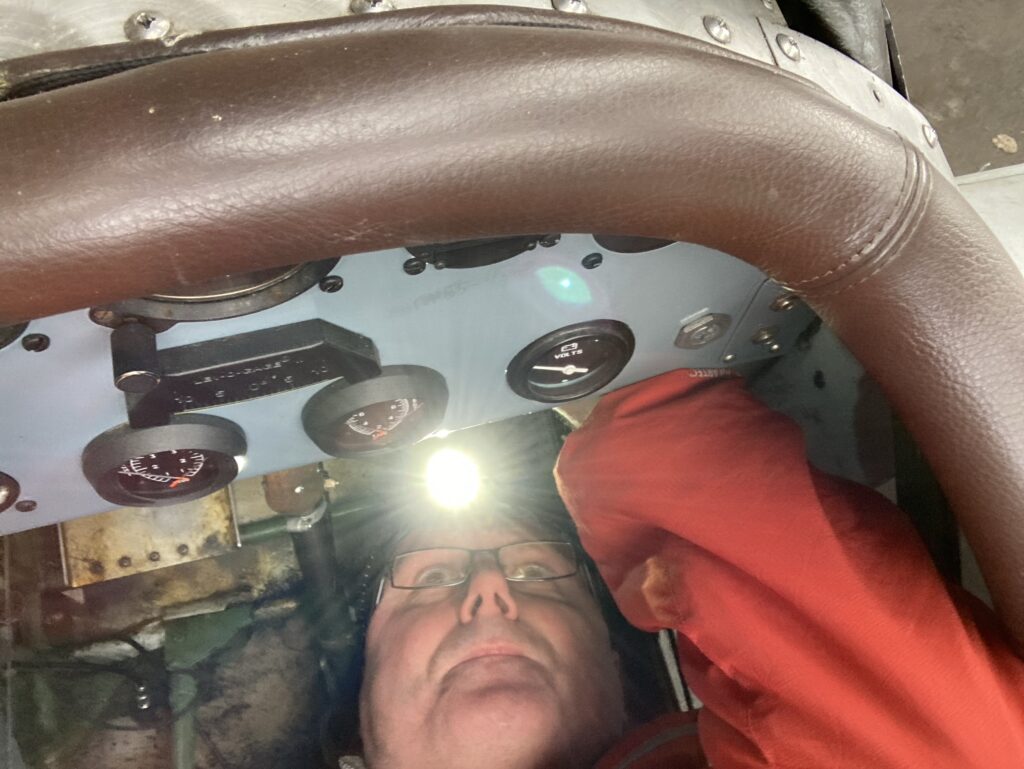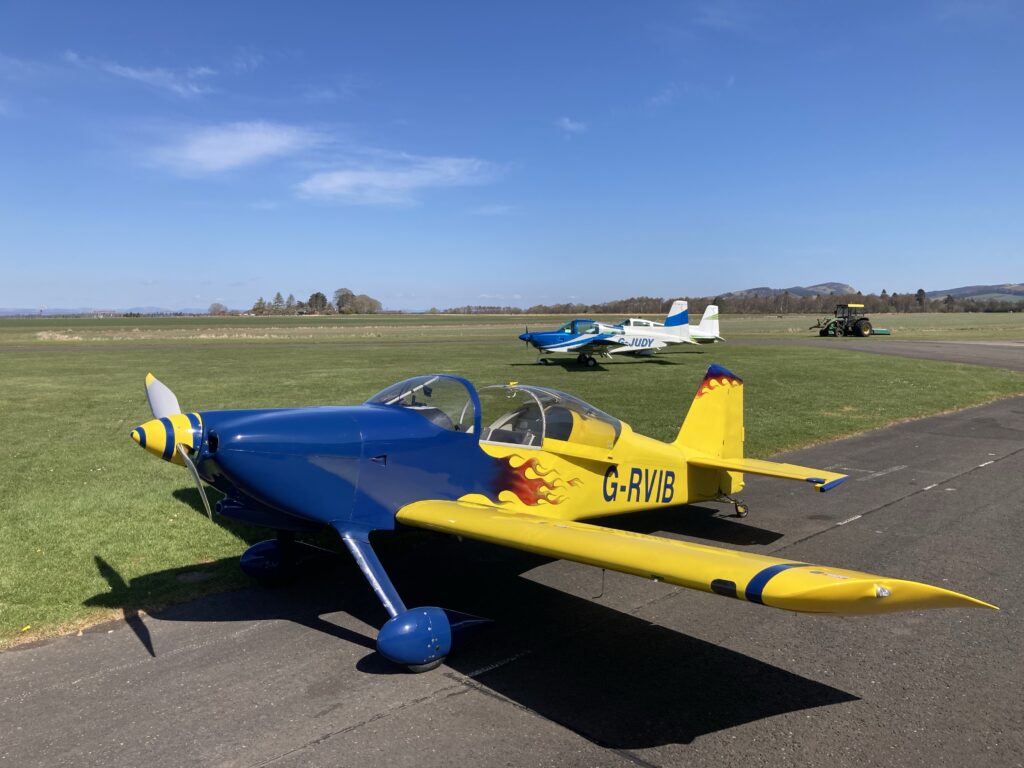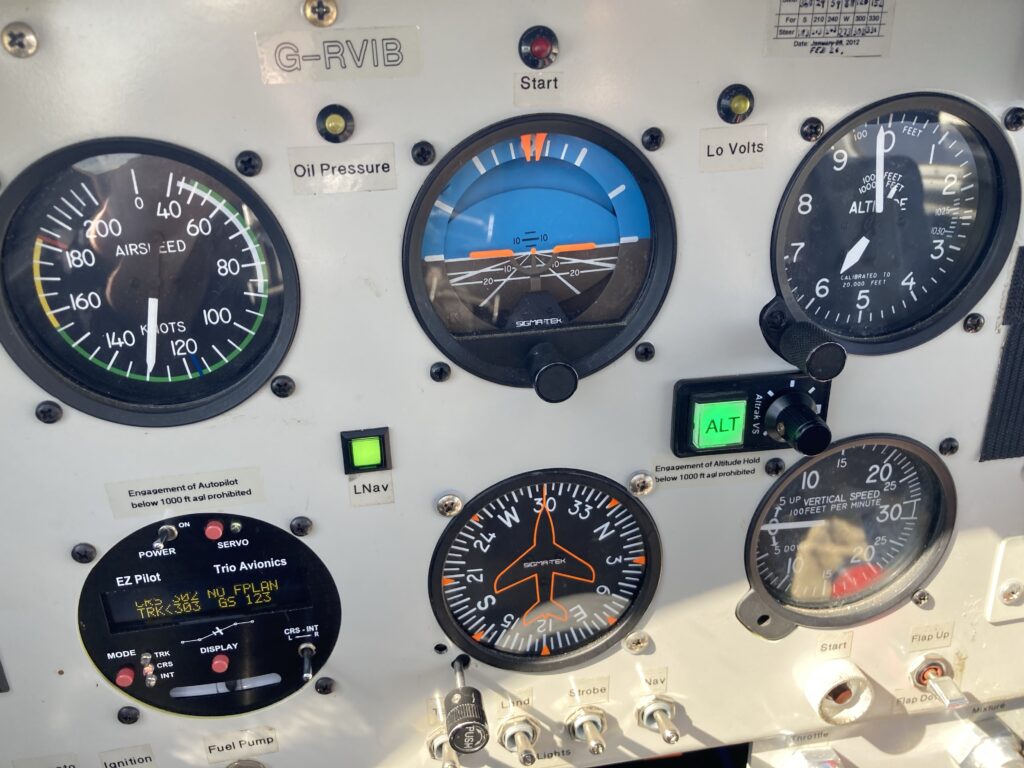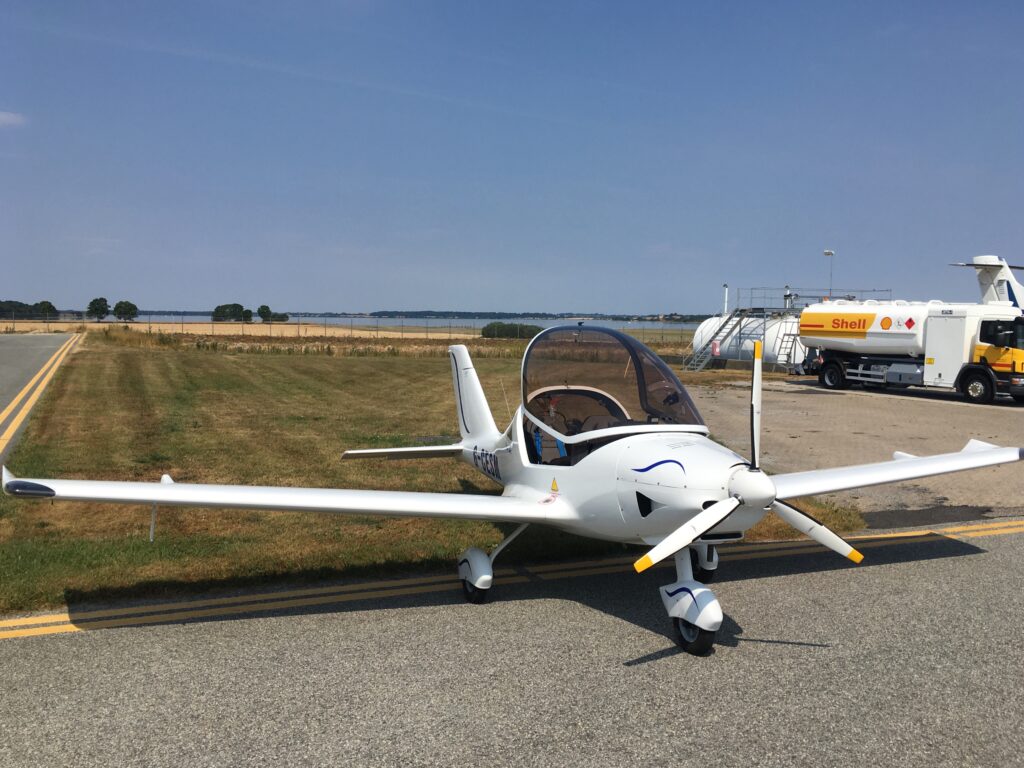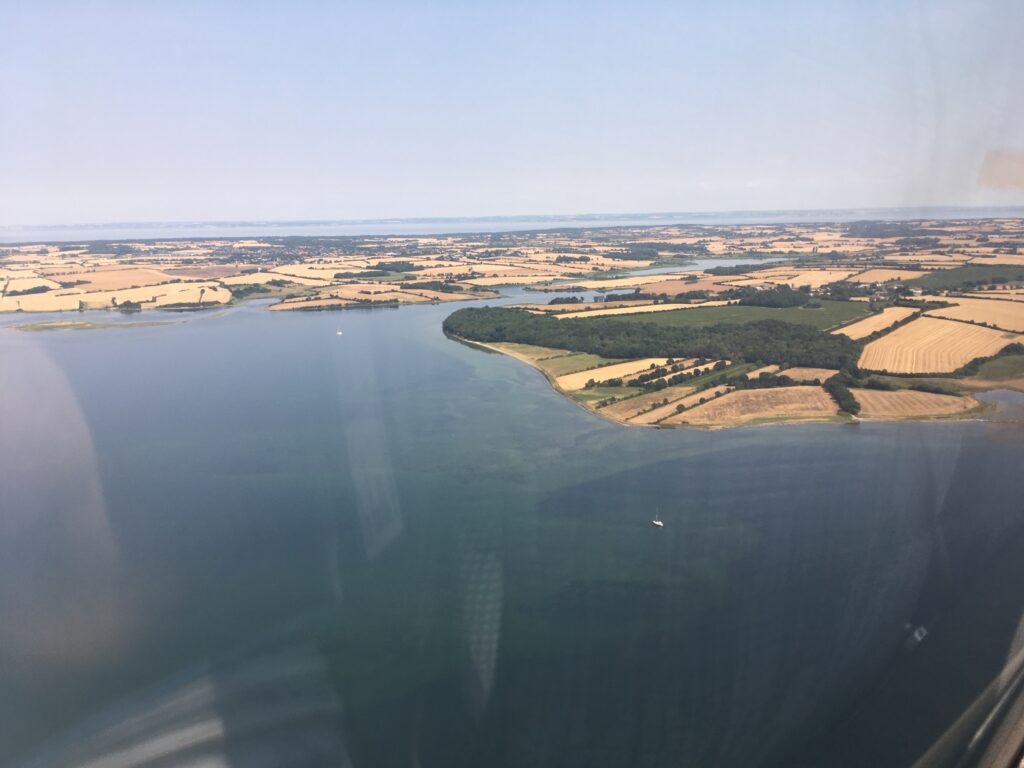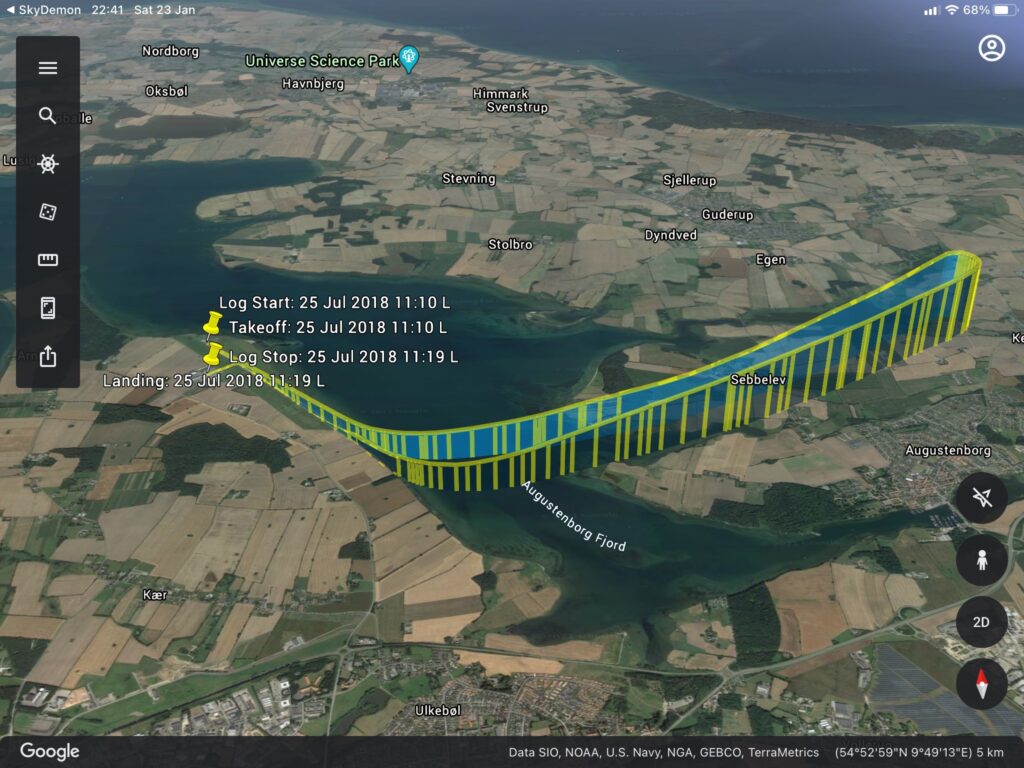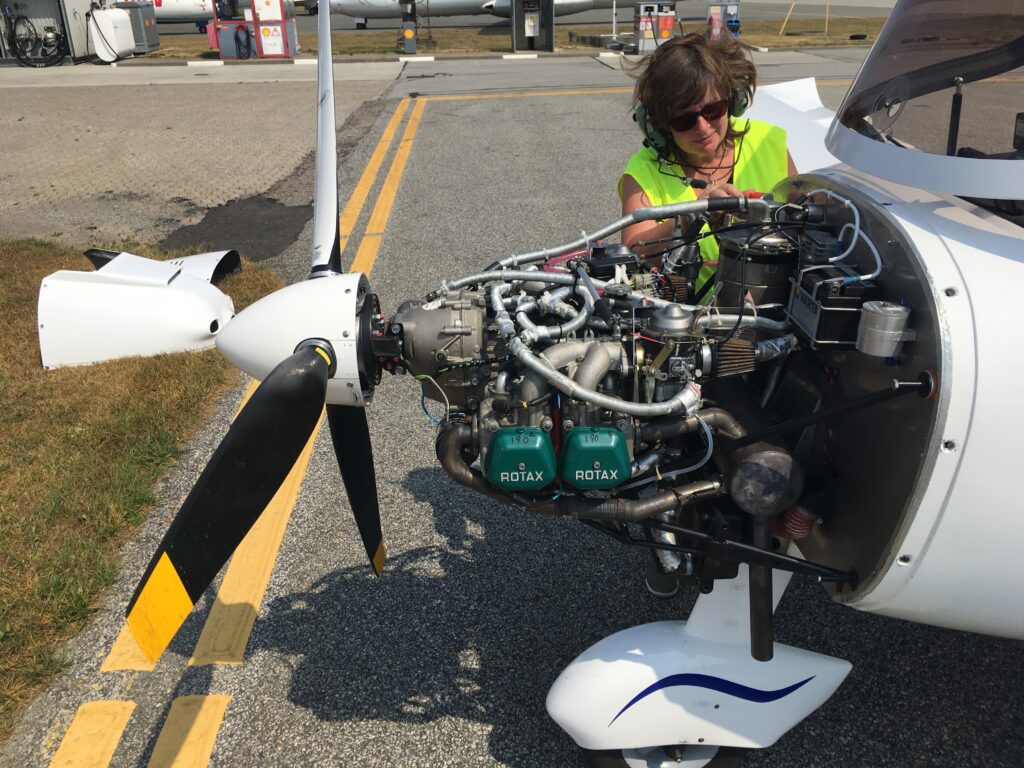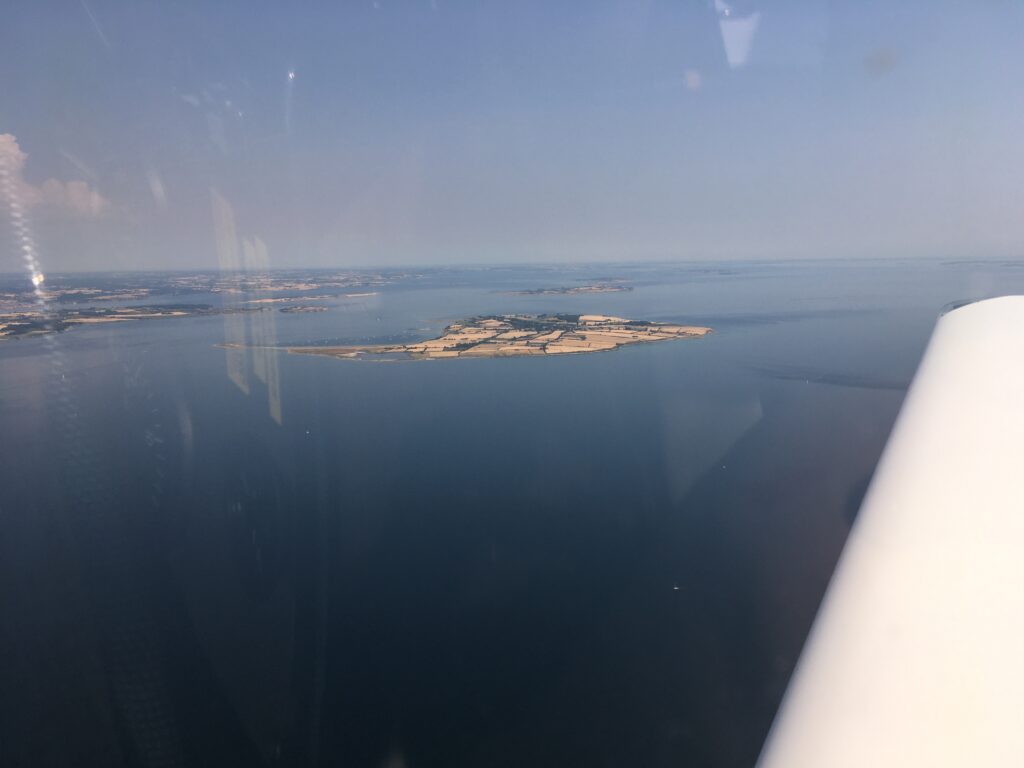Another cross country epic by guest contributor Danny Linkous, famous author of http://www.sigurdmartin.se/2020/10/27/cub-trip-across-the-usa/
Big news here in the hangar is the empty chocks and oil drip pans that are no longer required…

I sold the Chipmunk, WD345, in early May. The new owner then contracted me to deliver it to him in Bellview, Illinois, about 20 miles east of St. Louis, Missouri.
I plotted out the course on ForeFlight. About 500nm total, I decided to make short legs to break up the monotony of the trip, but more importantly, out of respect for the Chipmunk’s short range. The first leg was only 44nm, but I wanted to land short of the Appalachian Mountains and take on full fuel in case I had to deviate to get across the mountains (the Foreflight shot below was made the day BEFORE I flew the trip…no rain the day I went).

I awoke at 0430, and began doing all the little things that need to be done before such a flight. I found myself ready to go at 0700. However, fuel would not be available until 0800 at my first stop, so I waited until about 0720 to launch. Bitter sweet moments, waiting to take what had been my airplane for 7 1/2 years to it’s new owner. Still better than watching the new owner fly away in it, leaving me there, alone, airplaneless…I guess.
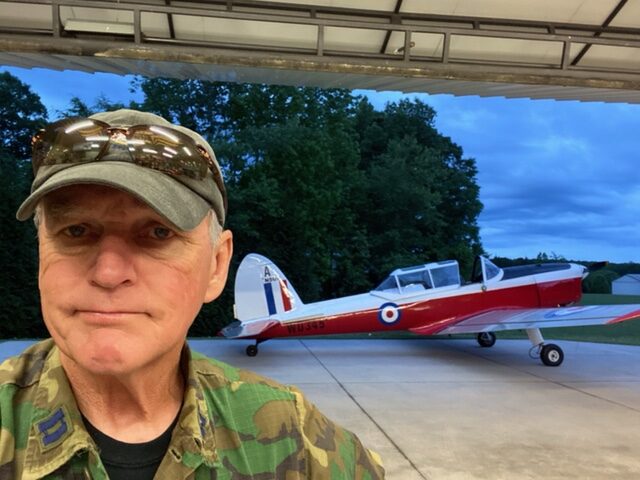
I arrived at my first stop, waited for the staff to open the office, topped off with fuel and checked the weather. My next stop was only 64nm away, but it was on the other side of the mountain range. The weather there was VFR, but the mountain ridges were obscured. I waited an hour for the clouds over the ridges to lift, took off, turned west and quickly found out that the clouds over the ridges were still clinging on. I followed the ridge line to the northeast.

I continued to the northeast where there was a pass through the mountains which hopefully would allow me to get across the range, but it too was obscured.

The weather on the other side of the Appalachian range was perfect, clear and 10+ miles visibility, all the way to my destination. But, since there are rocks and trees in those clouds, I decided to abort the mission and RTB (return to base). A driving factor in that decision was an appointment I had in two days. If it looked like I couldn’t get to my destination and back in two days, I was going to scrub the flight and wait for a better opportunity.
As I headed back to home base, I came up with Plan B since Plan A didn’t work out so well. After landing, I called regarding the appointment, asking if I could change it to next week. That was agreed upon, so after about an hour on the ground, I took off again, back to my first stop (gotta fuel up before crossing those mountains, you know) without the pressure of having to be there on that day and back the next.
I landed, topped off the fuel, sharing the ramp with another deHavilland product. He had no issue with obscured ridges, I imagine.

Again, I launched with hopes of getting over the mountains. I was rewarded with much better conditions, allowing me to continue. I could see across all the ridge lines on my course, with only the highest points still under cloud.
The further west I flew, the better the weather became.
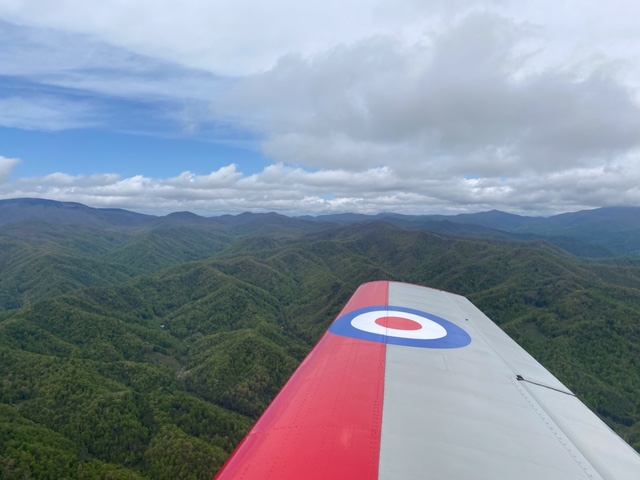
I am always amazed when flying over the Appalachians. There are tens of thousands of square miles of nothing much more than trees and hills, with very little sign of a human presence. So beautiful in the late spring/early summer when GREEN is bursting out all over.

I put the Appalachians behind me, with much flatter terrain and blue skies ahead.

My first stop west of the mountains was the Greenville, Tennessee airport. As I entered the downwind, I saw a buzzard about 100 feet above me. As I passed under him, I was very pleasantly surprised to see that the “buzzard” was in fact a bald eagle, which is a rare sight in this part of the country. A good omen, thought I!
The remainder of the flight was uneventful, the weather good, and I even had a couple knots of tailwind the whole day. Most airports I landed at had self-serve fuel, so the stops were brief. I was usually on the ground only about 20-30 minutes before being on my merry way.
I arrived at 2IL7 airport in Bellview, Illinois at 2000 after 7 hours of flying and 8 landings. One of my better landings, a three pointer on the 2500 foot grass runway, was done at 2IL7 and observed by the new owner and a dozen or so friends. I taxied in, shut down, and let out a sigh of relief. A long day, a bit challenging at times, but a wonderful experience. And, as I knew it would be, it was easier turning the airplane over to the new owner rather than seeing him fly away in it. Just a bit easier…a little bit.

New adventures await! After spending a night in a hotel in St. Louis, my flight home didn’t leave until 1830, so I visited Creve Coeur Airport (1H0) about 7nm west of St. Louis. If you EVER get anywhere near this airport, VISIT IT! Friendly people and more vintage airplanes than about anywhere. Here’s where I started my visit, as I exited the Uber ride and began walking about, looking in open hangars.
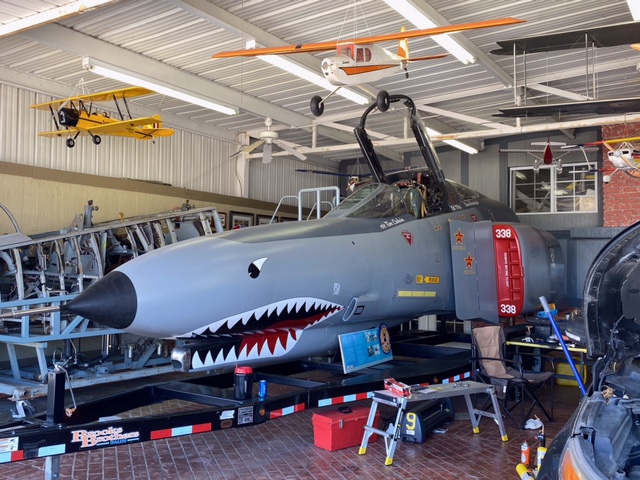
I do have a bit of time in that cockpit, as you know.
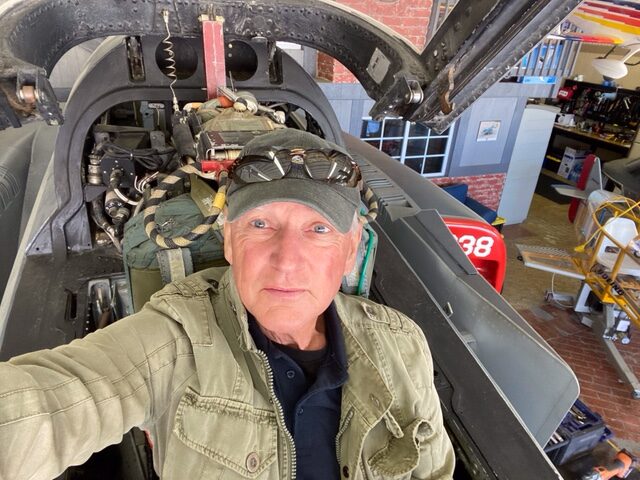
Treasure everywhere!
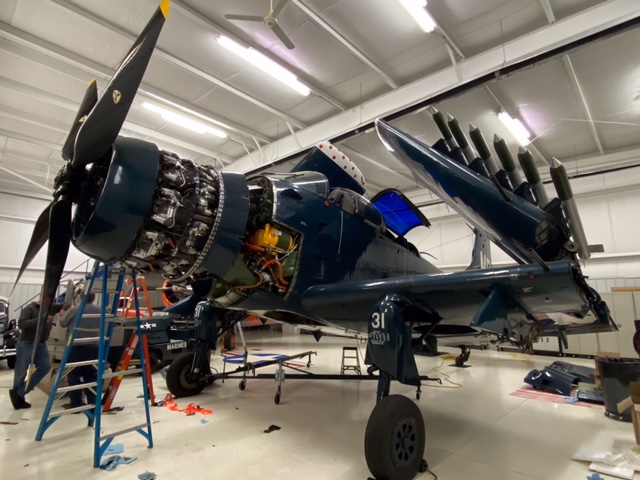

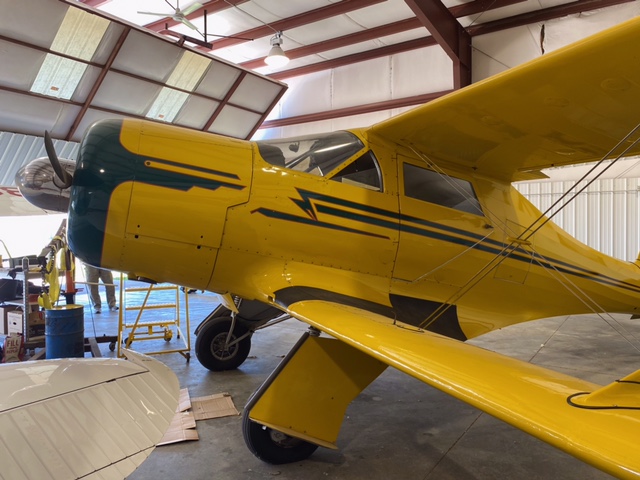
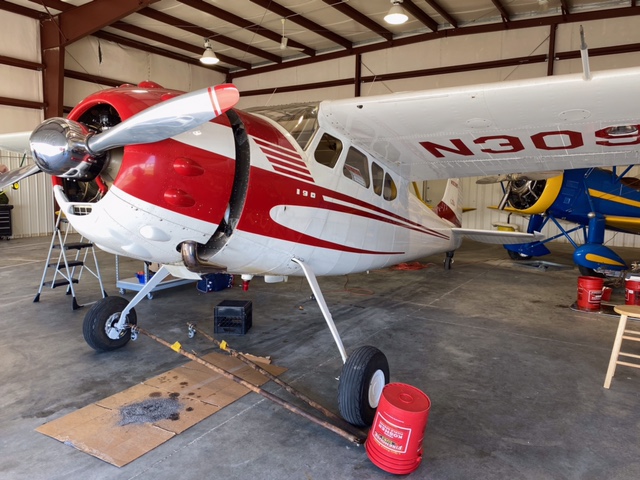
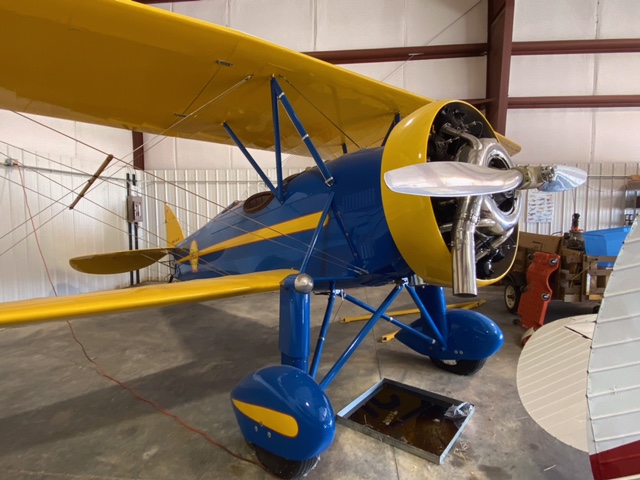
Now, on to what’s next. The empty chocks and unused drip pans in the hangar will not be idle long…

